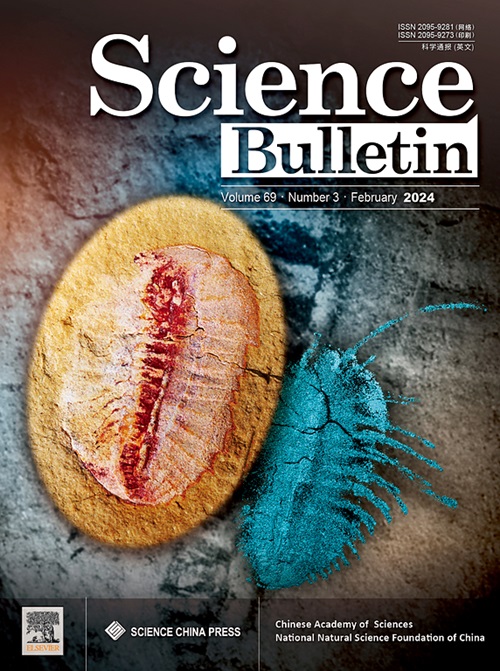Chemically gated ion transport in two-dimensional heterogeneous membranes with ultrahigh metal ion selectivity
IF 21.1
1区 综合性期刊
Q1 MULTIDISCIPLINARY SCIENCES
引用次数: 0
Abstract
Membranes are of particular importance in maintaining physiological activities, with crucial functions including selective permeation of certain ions. Such ion selectivity is achieved via complex molecular machinery to distinguish ions depending on their local physical–chemical environments, which are triggered by a variety of stimuli. Reproduction of such machinery in solid state systems is desirable for applications such as smart filtration, chemical sensing, and energy conversion, but remains a challenging task. We report regulated ion transport in artificial two-dimensional heterogeneous membranes, where the assembled polyacrylic acid macromolecules on the surface of functionalized graphene oxide membranes behave as a molecular regulator. The membrane exhibits chemically gated ion permeation, with the permeability of bi-valent metal cations tunable in response to the concentration of certain signaling ions. The chemistry gating effect is further found bi-valent ion-specific since it negligibly influences the rapid flow of monovalent metal cations. Molecular dynamics simulations reveal its origin as the high energy barriers required for reconfiguring the anion shells formed around bi-valent cations upon their entry. That also explains the observed mono-/bi-valent ion permeability ratio of up to >104. Our work allows fabricating membranes with implanted biomimetic functions of adaptive permeability and selectivity, governed by the choice of components and their responses to the chemical environments.

具有超高金属离子选择性的二维非均质膜中的化学门控离子传输。
膜在维持生理活动方面尤为重要,其关键功能包括某些离子的选择性渗透。这种离子选择性是通过复杂的分子机制来实现的,该机制根据各种刺激触发的局部物理化学环境来区分离子。这种机械在固态系统中的再现对于智能过滤、化学传感和能量转换等应用是理想的,但仍然是一项具有挑战性的任务。我们报道了调控离子在人工二维非均相膜中的传输,其中在功能化氧化石墨烯膜表面组装的聚丙烯酸大分子表现为分子调节剂。膜表现出化学门控离子渗透,双价金属阳离子的渗透率可根据某些信号离子的浓度进行调节。进一步发现化学门效应是双价离子特异性的,因为它对单价金属阳离子的快速流动影响可以忽略不计。分子动力学模拟揭示了它的起源是在双价阳离子进入时形成的阴离子壳重新配置所需的高能量势垒。这也解释了观察到的单/双价离子渗透率比高达bbb104。我们的工作允许制造具有自适应渗透性和选择性的植入仿生功能的膜,通过选择成分及其对化学环境的反应来控制。
本文章由计算机程序翻译,如有差异,请以英文原文为准。
求助全文
约1分钟内获得全文
求助全文
来源期刊

Science Bulletin
MULTIDISCIPLINARY SCIENCES-
CiteScore
24.60
自引率
2.10%
发文量
8092
期刊介绍:
Science Bulletin (Sci. Bull., formerly known as Chinese Science Bulletin) is a multidisciplinary academic journal supervised by the Chinese Academy of Sciences (CAS) and co-sponsored by the CAS and the National Natural Science Foundation of China (NSFC). Sci. Bull. is a semi-monthly international journal publishing high-caliber peer-reviewed research on a broad range of natural sciences and high-tech fields on the basis of its originality, scientific significance and whether it is of general interest. In addition, we are committed to serving the scientific community with immediate, authoritative news and valuable insights into upcoming trends around the globe.
 求助内容:
求助内容: 应助结果提醒方式:
应助结果提醒方式:


